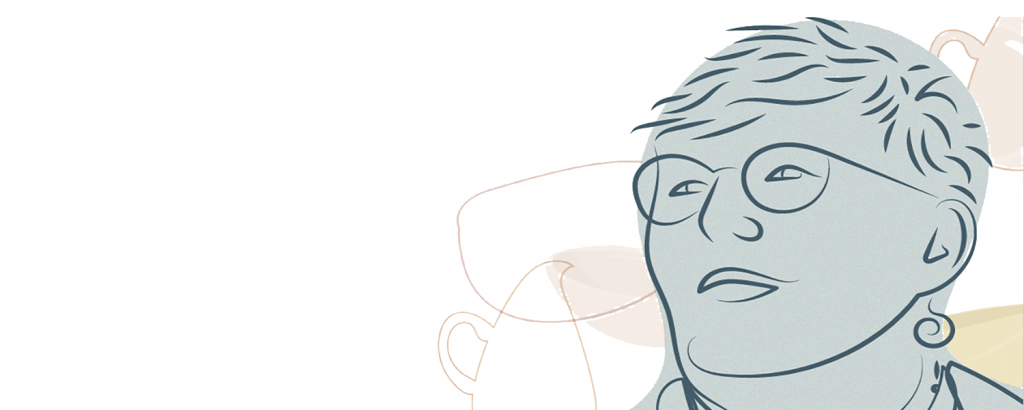
Virginia Woolf said, “Arrange whatever pieces come your way,” and Susan Harvey had that quote in mind as the theme of her life when we sat down to talk.
I didn’t really know where to start, I admit. She has done so much, seen so much, created so much; how could I possibly encapsulate it all? Susan had been thinking about it, too, and recalled that quote from Virginia Woolf as a good way to describe her path as an artist and writer.
As I listened back through our two-hour conversation I realized that I was going to have to pick and choose some pieces of all that we covered, and that feels appropriate to how her life has progressed. Carefully chosen and arranged pieces have been the key to her progression as an artist, and have provided a perfect perspective on how life often works.
“Back in the 80s and 90s, I was arranging piano crates and big oxygen tanks and huge boxes,” Harvey says as she looked back at her artistic roots, “and now I am making tablescapes, arranging smaller things with my Russel Wright china that I have become addicted to.”
At the beginning of her career as an artist, Harvey was working in huge gallery spaces, arranging giant items according to scale, shape and light, carefully creating the perfect combination specific to the space.
“The biggest one was at Nexus Gallery in Atlanta on Ralph McGill Boulevard and it was the size of a basketball court,” she says. “The only way things like the piano crates could get up to the space on the outside of the building from the driveway below was with a rope on a crane that lifted them up. Sometimes the rope would break, it was very interesting to accomplish.”
To go from such large-scale projects to arranging little bitty things in her Broad Street loft apartment is a fun change, but she says it is still the same process. Interestingly, it took getting back to her hometown of Rome, Georgia for her to discover that process as her medium, though she never would have guessed it until it happened.
“Another saying that describes my life well is an old Chinese proverb that says, ‘When the student is ready, the teacher will appear,’” Harvey notes.
That’s been very true for Harvey ever since she and her family moved back to Rome in 1964. They had lived in California and Japan, and she had been in Paris before that. She didn’t know what on earth she would do with herself back in Rome. She really wanted to move somewhere more exciting, but her husband, David, said it was time to go back home.
She tried all of the traditional things to keep herself active: the garden club, the Junior Service League, the church; and she enjoyed them, but it wasn’t until she was introduced to an amazing teacher at Shorter College named Virginia Dudley, that she was able to find her true calling.
“Virginia was planted on Shorter Hill for me,” Harvey recalls. “A lot of other people enjoyed her and took classes from her, but I feel that she was placed there for me.”
It was in a little window of time in the late 60s and early 70s that she was able to study under Virginia. But it was in that time that the realization about her work exploded in Harvey’s mind. Virginia was a 3-D sculptor, painter and enamelist and showed Harvey that her mind works in three dimensions. Harvey had never been satisfied with the 2-D work she had tried while at Hollins College, so this was a real breakthrough in her work.
“I almost flunked that course,” she acknowledges. “I have the piece in my office that I made the day that the light turned on in my head. I put these pieces together that we had gathered from the scrap yards. I put those together and realized that I have to be able to look at things from six different directions in order for it to make sense, and that understanding has shaped everything that I have done since.”
As her focus developed, Harvey used her 3rd Avenue backyard as her studio and gallery, experimenting with big boxes and crates and painting them black, turning them on different sides and corners to see what she could create.
She believes that the secret to her work was perseverance, determination (which some would call obsession) and a few nice men who were willing to bring a truck and go to the dump when she called. She even had a few girlfriends who would drop everything and join her when it was time to go hunt. The “junk” they found was often pieces of Rome’s history, things she can still recall today. It was that connection to history and her roots that made her work so special.
But it was back-breaking work that really took a toll on her body and eyesight, she was determined to do as much as she could as fast as she could. “I didn’t start until about 40, so from 40 to 60 I was doing my work, and I knew I needed to accomplish a lot before I got to where I couldn’t continue.”
She had her first show at Berry College in 1979 and it was onward and upward from there.
“I once asked one of my workmen, ‘Willy, how did we do all that stuff?’ and he said, ‘Ms. Harvey, you was determined!’”
But, sheer determination wouldn’t have been enough had she not had all the pieces that made up her work at her fingertips. Susan acknowledges that Rome has provided her with everything she needed. If she had moved to one of the more glamorous spots she wished for, she could never have accomplished what she has here. When she retired from her large scale art she began writing the stories of her family history which eventually resulted in two beautiful books.
“I feel like I was planted here, against my protests though it may have been,” Susan can now see. “I thought I wanted to live other places, but if I had lived in New York or Washington or New Orleans, I wouldn’t have had the tie to the land and the history that I have here.”
Susan now looks back and realizes that the track of your life gets diverged from what you may have expected, but if you look, you can find your track wherever you are. It is a waste of time to think about what you could have done somewhere else or in different circumstances.
“Instead of saying ‘If only,’ you can arrange the pieces that come your way, and that is where you will find your whole.”



